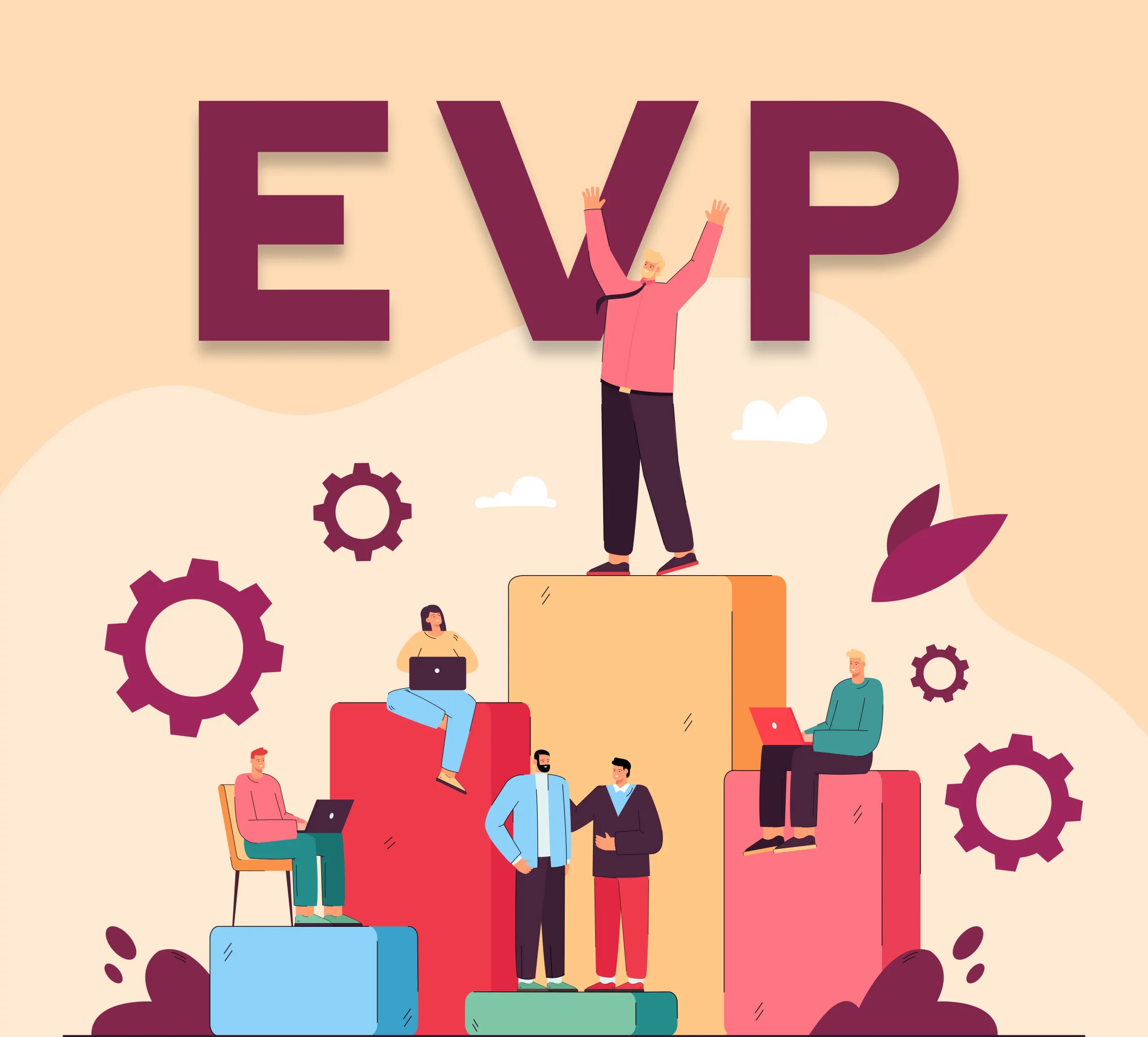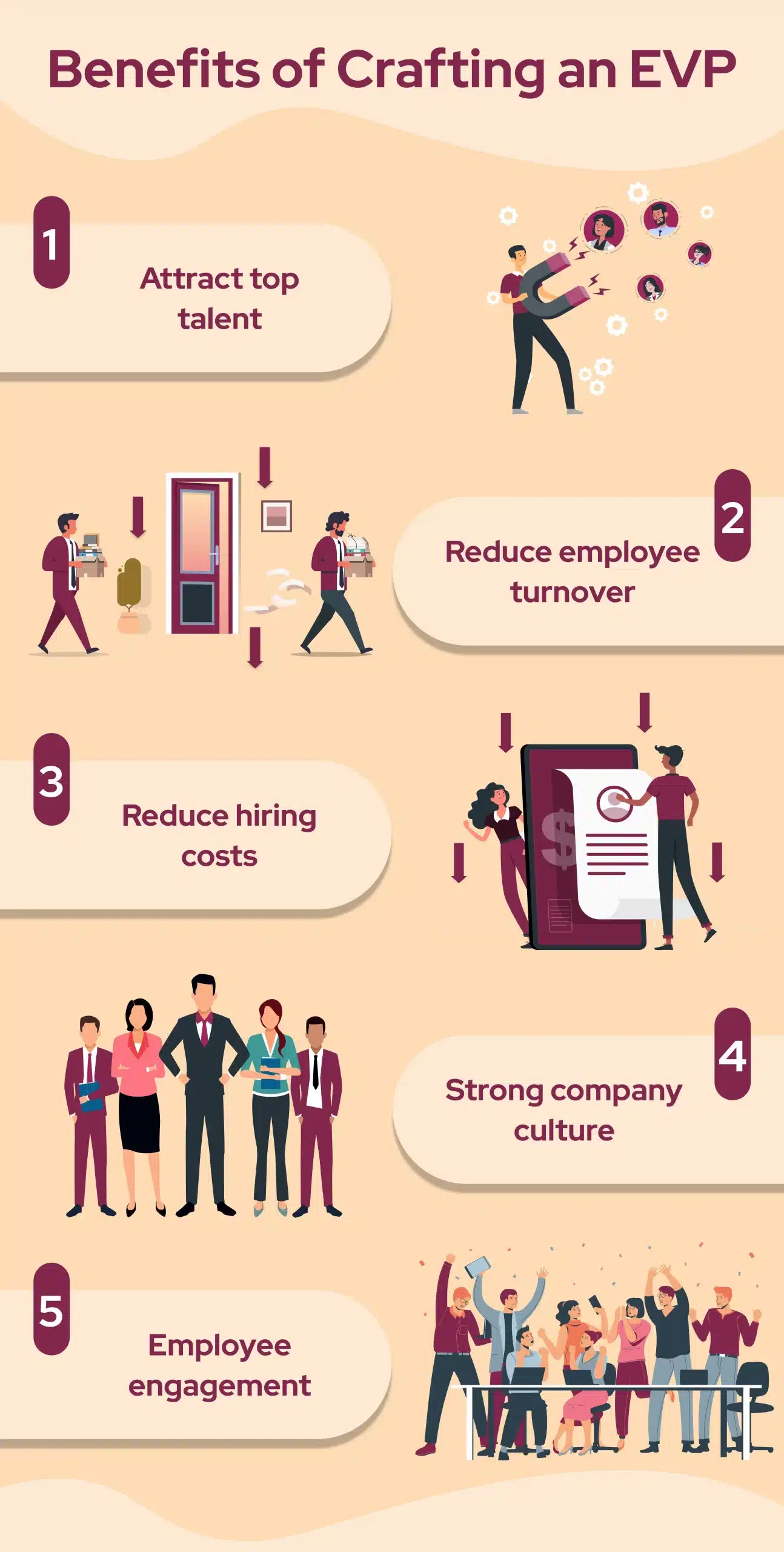Table of content
But what exactly is an EVP, and how can it unlock the secret to employee engagement? In this ultimate guide, we’ll explore the concept and its significance in driving employee engagement.
We’ll dive into the key components of a compelling EVP, from competitive compensation and benefits to professional growth opportunities and a positive work culture. Along the way, we’ll address the pain points that organizations often face when it comes to engaging and retaining top talent. Whether you’re an HR professional, a business leader, or someone simply interested in enhancing employee satisfaction, this guide will provide you with actionable insights and practical strategies to build a strong Employee Value Proposition.
The Power of Employee Value Proposition (EVP)
In recognizing the power of EVP, you gain a strategic lens into enhancing employee engagement and retention. It serves as the anchor, reflecting your company’s values, culture, and rewards, thereby influencing talent attraction.
A robust EVP not only communicates your commitment to employees but also creates a compelling narrative, making your workplace stand out in a competitive landscape. As you delve into the intricacies of crafting an effective EVP, you’ll find it to be more than a mere recruitment tool – it’s a catalyst for fostering a positive and productive work environment.
The components of an Effective EVP
An effective EVP is a mosaic, carefully crafted with key components that resonate with your workforce. Start with clarity in communication – a transparent portrayal of your company’s mission, vision, and values.
- Align compensation and benefits to showcase your commitment to employee well-being.
- Cultivate a positive and people-first culture that fosters growth, inclusivity, and a sense of purpose.
- Professional development opportunities should be woven into the fabric of your EVP, demonstrating your investment in employee career progression.
- Recognize the importance of work-life balance and highlight initiatives that support it.
A well-rounded EVP integrates these components seamlessly, creating a compelling narrative that not only attracts top talent but also nurtures a loyal and engaged employee base. Understanding these building blocks equips you to construct an EVP that truly reflects your organization’s commitment to its people.
The Benefits of a Strong Employee Value Proposition
Embrace the multitude of advantages that come with a robust Employee Value Proposition (EVP), elevating your organization to new heights. A strong EVP serves as a magnetic force, drawing in top-tier talent by showcasing your company as an employer of choice.
- Beyond recruitment, it cultivates a sense of belonging among existing employees, fostering heightened engagement and reducing turnover rates.
- A well-crafted EVP not only attracts individuals with the right skills but also those who align with your company’s values, enhancing cultural fit.
- Moreover, a compelling EVP contributes to increased employee satisfaction and motivation. It acts as a catalyst for improved performance, as employees feel recognized and valued for their contributions.
- This positive work environment, rooted in a strong EVP, can lead to heightened innovation and collaboration among team members.
- Additionally, a solid EVP is a powerful tool for differentiating your organization in the competitive market, establishing a unique identity that resonates with both clients and partners.
Ultimately, the benefits of a strong EVP extend far beyond recruitment, shaping a workplace culture that thrives on mutual respect, growth, and shared success.
Implementing and Managing EVP
Start your journey of implementing and managing your Employee Value Proposition (EVP) with strategic finesse.
- Begin by aligning your EVP with organizational goals, ensuring it seamlessly integrates into your overall business strategy.
- Communicate the EVP clearly and consistently across all touchpoints, from recruitment materials to internal communications, fostering a unified understanding among employees.
- Establish a feedback loop to gauge the effectiveness of your EVP. Regularly solicit input from employees to assess their experiences and expectations, allowing for necessary adjustments to keep your EVP relevant.
- Integrate the EVP into performance management processes, emphasizing its role in recognizing and rewarding employees who embody the organization’s values.
- Lastly, remember that an EVP is dynamic. As your organization evolves, so too should your EVP. Regularly revisit and refine it to reflect changes in the business landscape and the evolving needs of your workforce.
By thoughtfully implementing and actively managing your EVP, you lay the foundation for a resilient and impactful employer brand.
Overcoming Challenges in Creating an Effective EVP
Navigating the creation of an effective Employee Value Proposition (EVP) comes with its challenges, but addressing them head-on can lead to a stronger, more resilient EVP.
- Acknowledge the complexity of aligning your EVP with diverse employee expectations and organizational goals. Overcome this by conducting thorough research and feedback sessions to understand your workforce’s needs and aspirations.
- Another challenge lies in maintaining consistency across communication channels. Tackle this by fostering collaboration between HR, marketing, and leadership, ensuring a unified message.
- Additionally, addressing skepticism or doubts from employees requires transparency. Clearly communicate the intentions behind the EVP, emphasizing its benefits and how it aligns with the company’s values.
- Evolving workplace dynamics can pose challenges as well. Stay agile by regularly reassessing your EVP to ensure its relevance.
By proactively addressing these hurdles, you pave the way for a more effective EVP that resonates with your workforce and contributes to a positive organizational culture.
Conclusion
As we conclude this exploration into Employee Value Proposition (EVP), it’s clear that a well-crafted EVP is more than a recruitment tool – it’s the cornerstone of a thriving workplace. Reflect on the power of aligning your organizational values with employee expectations, creating a compelling narrative that attracts and retains top talent. Recognize the multi-faceted benefits of a strong EVP, from enhanced employee satisfaction to a distinctive market identity.
As you venture into implementing and managing your EVP, remember the importance of adaptability. Your EVP should evolve alongside your organization, staying attuned to the dynamic needs of your workforce. Despite the challenges in this journey, overcoming them contributes to the resilience and authenticity of your EVP.
In essence, your EVP is a living expression of your company culture and commitment to your employees. Embrace it as a strategic tool that not only shapes your employer brand but also nurtures a workplace where individuals thrive and contribute to collective success. With a well-nurtured EVP, you lay the groundwork for a sustainable, people-centric organizational future.



